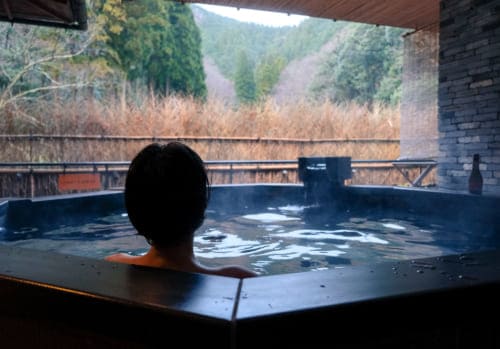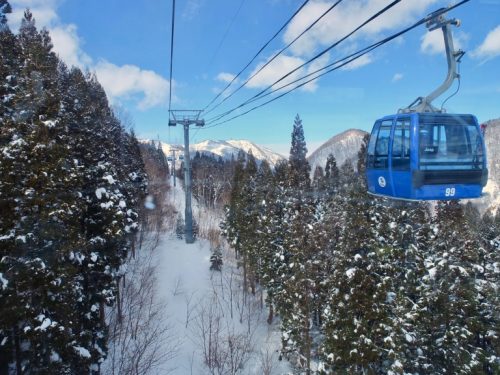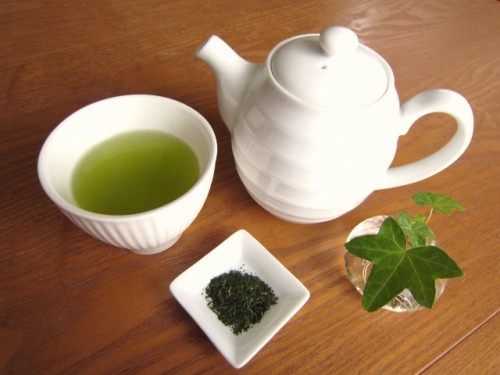Tuffs of amber wheat, stripped clean of their awn, march in kempt lines up the barren hill. The shadows of mountains, cast dark in the evening light, stretch across the valley. Seven trees line the ridge, solitary and uniform, their towers quiet over the field in the clement Hokkaido weather.
Known as “Fairy Tale Hill” or Meruhen-no-oka, it is minutes away from Memanbetsu Airport in the town of Oozora, a quaint location between Abashiri and Kitami in the Okhotsk region of Hokkaido. A popular photo spot for tourists and locals alike, the scene caught the eye of visionary director Akira Kurosawa and made a brief appearance in his 1990 film, Dreams. In a vignette highlighting a meeting between an art student and the eclectic painter Vincent van Gogh.
The vast landscapes of East Hokkaido, across the seasons, are rich in virgin land, scaling mountains, and eternal horizons. Beauty is balanced by its intimidating size, necessitating travel by car. East Hokkaido is bigger than both Kanto and Kansai. Critics believe its pastoralism is beneath Japan’s lavish haunts — including its well-trodden Golden Route. The perceived lack of Japanese culture and more aesthetic staples forces eyeballs away from East Hokkaido’s wild nature and arguably equal cultural depth.
At least in Kurosawa’s Dreams, Van Gogh says, when looking out upon East Hokkaido’s nature, “To me, this seems beyond belief.”
Love thy Nature
The honks of whooper swans bellow across the cracking ice. In winter, these avaricious travelers from northern lands make a home in tepid pools near the shoreline of the Lake Kussharo Caldera. Unlike nearby Lake Akan or Lake Onetto, Kussharo’s gelid surface is unwalkable in winter. Only the ancient gods walk its crystal surface, their tracks are known as omiwatari, manifest as ridges of ice birthed from rapid freezing and melting under the powerful Hokkaido winter sun.
 Lake Kussharo
Lake Kussharo
ESTABLISHMENT NATURAL_FEATURE- Lake Kussharo, Teshikaga, Kawakami District, Hokkaido, Japan
- ★★★★☆
Although the caldera water is pure, it is alkaline and suffocates the growth of different plants or algae. On cloudless days, the depths of the lake are deceptively close when viewed from the shoreline of the Wakato Peninsula. Mossy-colored salmon dart around in these shallows, introduced to balance the ecosystem. They meander without care, occasionally breaking the glassy surface.
 Wakoto Peninsula
Wakoto Peninsula
ESTABLISHMENT POINT_OF_INTEREST- Kussharo, Teshikaga, Kawakami District, Hokkaido 088-3341, Japan
- ★★★★☆
Not far from Wakato is the weathered onsen town of Kawayu. Home to natural onsen water, its arterial spring still flows through the center of town. Vapors rise above rusted earth and metal and rise high among forlorn buildings awaiting new life. Accessing Lake Kussharo and Kawayu is possible through the pristine Bihoro Pass, which offers panoramic views of the caldera and the grand Shiretoko peninsula on clear days.
 Kawayu Onsen
Kawayu Onsen
COLLOQUIAL_AREA POLITICAL- Kawayu Onsen, Teshikaga, Kawakami District, Hokkaido, Japan
- ☆☆☆☆☆
Enjoy the history and ecology of this marvelous land at the Kawayu eco-center. A modern facility with space to relax on both the first and second floors often showcases the work of local artisans and photographers. Many of them offer guiding services in and around the Akan-Mashu area.
 Kawayu Visitor Center
Kawayu Visitor Center
ESTABLISHMENT POINT_OF_INTEREST TRAVEL_AGENCY- Japan, 〒088-3461 Hokkaido, Kawakami District, Teshikaga, Kawayuonsen, 2-chōme−2−6 2F
- ★★★★☆
While hotels are available in Kawayu Onsen, towns such as Kitami or Abashiri offer reasonably priced hotels with access to tourism corridors such as the Okhotsk region and Shiretoko National Park.
The Place Where Humans Dwell
Over the mountains from Kawayu and nearby Teshikaga Town lies Lake Akan Onsen. With an assortment of hotels on its lakeside, the small town is the epicenter of Ainu heritage in East Hokkaido. Resting under the views of mighty Mount Oakan, formidable statues of owls, gods, or kamuy in the Ainu language guard the entrances to the Ainu village.
The Japanese once referred to this land as Ezo. The Ainu referred to this land simply as Mosir, or “the Land.” The Ainu, hunters and tradesmen, roamed these lands for hundreds of years as the inheritors of the Land from forerunner groups the Satsumon and Okhotsk.
 Akanko Onsen
Akanko Onsen
COLLOQUIAL_AREA POLITICAL- Akanko Onsen, Kushiro, Hokkaido, Japan
- ☆☆☆☆☆
In small villages, known as kotan, they worshipped gods that were embodied in all nature. Forcefully assimilated into the burgeoning Japanese Empire, much of the Ainu heritage was lost, and now, few native speakers remain, if any.
What does remain blurs the connection between nature, man, and myth. Local craftsmen toil at the entrances of their shops, focused on new wooden sculptures and crafts. Curious, they look up at guests walking up and down the stone-tiled strip, inevitably gazing back down at their handiwork.
Around the small onsen town are walking paths and mountain trails where local guides tell the story of the land before Ezo. Near the Lake Akan Eco-Center is the popular Bokke lakeside route. A leisurely path meanders next to the lake’s calm waters, culminating around a mud volcano and a shoreside view of the majestic Mount Oakan.
 Mount Oakan
Mount Oakan
ESTABLISHMENT NATURAL_FEATURE- Mount Oakan, Akancho Shitakara, Kushiro, Hokkaido 085-0220, Japan
- ★★★★☆
Both Mount Oakan and its companion, Mount Meakan, are accessible to hikers. Oakan’s steep incline proves tougher than Meakan’s winding trail. Both offer panoramas of Lake Akan and the surrounding area. While demanding, each mountain is perfect for both beginners and experts alike. The wild landscape is home to fearsome brown bears, and challengers are expected to prepare accordingly with bear bells and spray. The trailheads feature small wooden boxes for signing in and out so rangers are aware of your presence on the trail.
Gods — Both Old and New
Not far from the city of Kitami is the North Fox Farm, also called the Kita-kitsune-bokujyo, where guests can get up close to foxes. In the wild, foxes tend to avoid people and are often carriers of dangerous parasites. North Fox Farm’s foxes are kept healthy within the confines of the zoo, and enjoy their days basking in the warm Kitami sun. A symbol of Shinto, these foxes are memorialized across Japan as the messengers of good fortune at Inari shrines.
The site encourages watchers not to feed the foxes or crouch to their level to prevent any unwanted scratches or nips. Most foxes won’t pay too much mind to you. Relaxed, they are perfect for a cute Instagram post.
 Kitakitsune Farm (Fox Farm)
Kitakitsune Farm (Fox Farm)
ESTABLISHMENT POINT_OF_INTEREST TOURIST_ATTRACTION- 52-1 Rubeshibechō Hanaoka, Kitami, Hokkaido 091-0157, Japan
- ★★★☆☆
Elsewhere, between the quiet Lake Akan and Kushiro on the sea, the small town Akan, not to be confused with the onsen nearby, is home to the red-crowned cranes. Referred to by the Ainu as the sarurun kamuy, or the gods of the marsh, this small population of birds was once on the verge of extinction.
Efforts from residents helped the population flourish from the brink during times in winter when food was scarce, now they are a common sight across all four seasons. In Winter, they congregate at three different observatories, searching for food and a mate. Monogamous, they partner with another for life. Tall and majestic, their cries differentiate gender between birds. The cry of males is long, while females reply in two quick bursts. Red-crowned cranes nest deep within the Kushiro Wetlands, undisturbed by humans. Young hatch and remain close to their parents until maturation.
 Akan District
Akan District
ADMINISTRATIVE_AREA_LEVEL_2 POLITICAL- Tsurui, Akan District, Hokkaido, Japan
- ☆☆☆☆☆
Birding is the most popular activity among inbound tourists in East Hokkaido, and while the cranes retain a special place in the pantheon of the region’s avian residents, the smaller shima enaga (Hokkaido long-tailed tit) captures the hearts of many. These small birds are hard to see as these small white chested birds blend into the Hokkaido winter. Typically grouped, they chatter among the snow-covered branches of the forests. These fairies, among the wild, are often curious of visitors and will remain close, perfect for photography.
One cannot deny the size of East Hokkaido. Each corner of the region holds pockets of unknown charm, vibrant and local. Whether your start begins in Van Gogh’s dreams or Kushiro’s marshes, the road leads to adventure as wide as the many horizons for which East Hokkaido is heralded. From either Kushiro Airport or Memanbetsu, the landscape of East Hokkaido is ripe with dreamy scenery and a slow pace of life, restoring beleaguered big-city hearts.







No Comments yet!